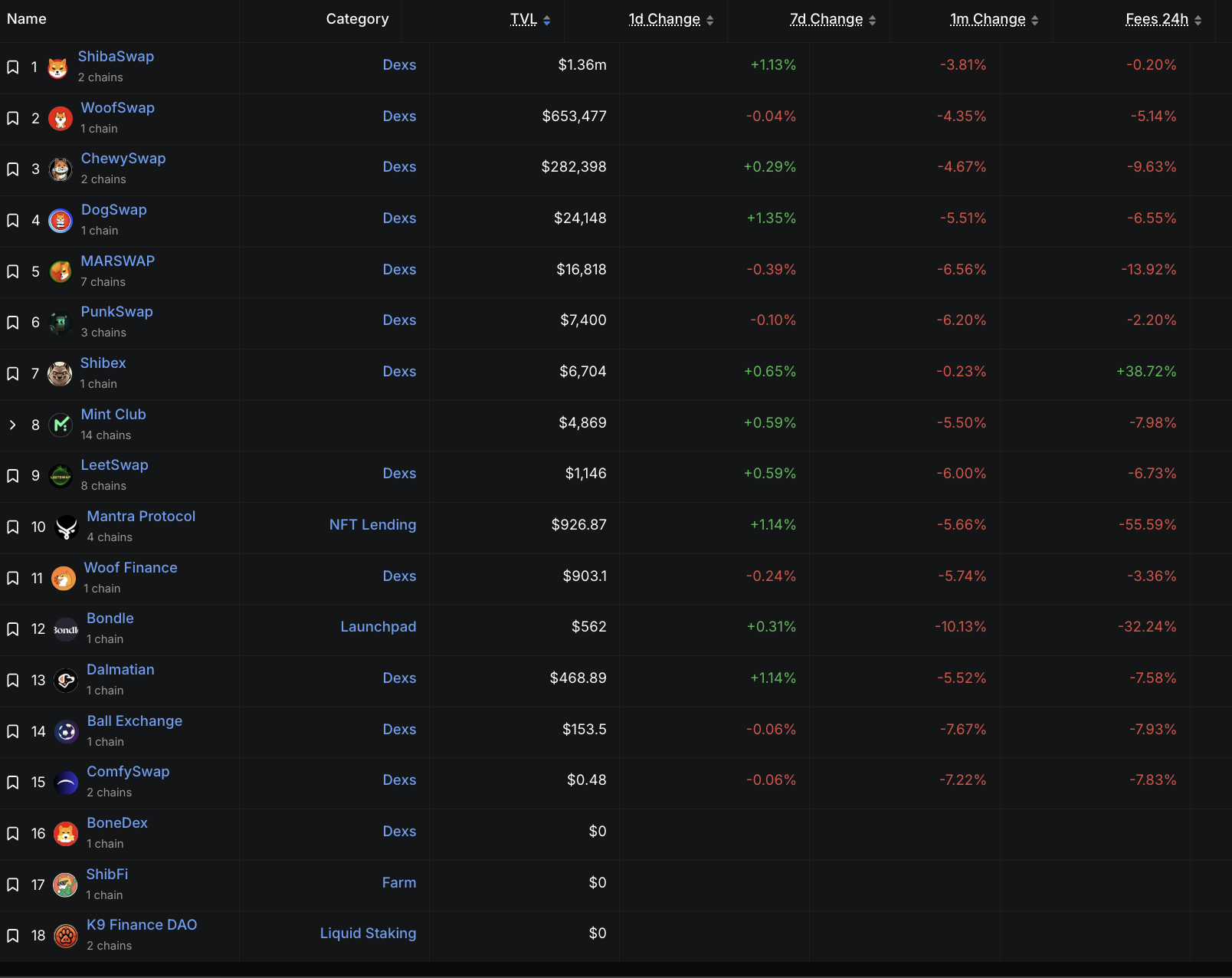Following years of anticipation, Shiba Inu’s Layer-2 (L2) solution Shibarium launched on August 16, 2023. Despite being designed to bring speed, scalability, and reduced costs to SHIB holders, network data shows that Shibarium’s daily activity has significantly lagged behind competing L2 networks like Base, Arbitrum, and Optimism.
This piece looks at how Shibarium has performed this year and what its slow growth means for the wider Shiba Inu ecosystem, especially for BONE, the token that powers Shibarium, and SHIB itself.
Shibarium’s User Engagement Falters After Meme Market Rally
According to Shibariumscan, Shiba Inu’s L2 network had an unimpressive start to the year. In the first quarter of 2025, daily active addresses on the network were relatively low, showing little user engagement.
It was not until April that activity began to pick up on Shibarium. This spike in network usage was driven by the surge in meme coin activity across the broader crypto market.
For context, between April 10 and May 10, the meme coin market capitalization rose 56% as demand for these assets rocketed.
Riding that wave, Shibarium saw a surge in activity, peaking at over 21,000 daily active addresses on May 12, its year-to-date high. However, this momentum did not last.
As the meme coin market mania began to fade in late May, user activity on Shibarium also declined. By June 5, the number of daily active addresses had fallen to around 9,000—a drop of more than 55% in just three weeks.
Why Shiba Inu’s Layer-2 Network Is Falling Behind Other L2s
This pattern of user activity on Shibarium suggests a lack of sustained utility or use cases that keep users engaged beyond speculative trading.
In an exclusive interview with BeInCrypto, Dominick John, an analyst at Kronos Research, noted that while Shibarium experiences “bursts of community-driven activity,” it still lags behind other Layer-2 networks like Base, Arbitrum, and Optimism.
“Those networks benefit from robust ecosystems and composability in DEFI beyond the memecoin hype. For Shibarium to stand out, it must evolve and cultivate a unique DeFi ecosystem that delivers long-term value,” John explained.
According to John, Shibarium’s muted growth “reflects project-specific hurdles, limited dApp adoption, ecosystem fragmentation, and fierce L2 competition more than meme-token fatigue.”
On-chain data from DefiLlama confirms this narrative. Currently, Shibarium hosts just 18 decentralized finance (DeFi) projects— a stark contrast to more established Layer-2s like Base and Arbitrum, which support 549 and 741 projects, respectively.

Lynn C., SONEX’s CMO, echoes the same sentiment. Lynn acknowledges that meme-token fatigue may be partially responsible for Shibarium’s slow adoption, but emphasizes that much of the challenge lies in project-specific scaling strategies.
“On one hand, there is certainly meme-token fatigue in the market as users look for more utility-driven projects. On the other hand, Shibarium’s growth challenges may be specific to how the network is structured and its approach to scaling. There’s no one-size-fits-all solution, and different projects take different paths toward growth,” she said.
Despite its challenges, Shibarium has introduced utility benefits to the Shiba Inu ecosystem. John noted, “Shibarium has strengthened the Shiba Inu ecosystem by enabling cheaper transactions, supporting SHIB burns, and giving BONE real utility.”
For Lynn, the L2 “has added an important component to the Shiba Inu ecosystem by offering a Layer-2 network that promises to scale transactions and reduce costs.”
BONE Token Struggles Amid Shibarium’s Slow Adoption
BONE serves as the primary gas token, facilitating transactions and enabling users to interact on Shibarium. With fewer transactions taking place on the L2, the practical need for BONE as gas has diminished. This lack of on-chain utility has impacted the token’s market performance, falling 38% YTD.

John echoed this concern, stating that, “from a market-making perspective, token utility needs to translate into recurring on-chain demand and transactional velocity. At this stage, BONE demonstrates some early use cases, but it has yet to establish consistent capital retention across the ecosystem.”
On the other hand, Lynn holds a more cautiously optimistic view of BONE. In her words:
“BONE has certainly played a role within the Shiba Inu ecosystem, but like many tokens, it’s still working on building its utility beyond speculative trading. It’s common for newer tokens to find their footing as they grow and develop more use cases. The demand for tokens like BONE will evolve as the ecosystem matures and as more opportunities for real utility emerge.”
For the SHIB meme coin, Shibarium’s lackluster performance also has its impacts.
“If Shibarium fails to scale meaningfully, SHIB holders face several risks: reduced utility due to low transaction volume and limited dApp adoption, weaker SHIB burn rates, and stagnating token value,” John added.
Lynn, on the other hand, struck a slightly more optimistic tone. According to her:
“If Shibarium doesn’t scale, it could slow down the momentum of the broader Shiba Inu ecosystem, especially in terms of user adoption and network effects. However, it’s important to remember that blockchain and DeFi projects face various challenges as they grow, and Shibarium’s trajectory will likely continue to evolve as the team adapts to feedback and market needs.”
The post Shibarium’s Slow Burn: What Low Activity on Shiba Inu’s L2 Means for BONE and SHIB appeared first on BeInCrypto.
